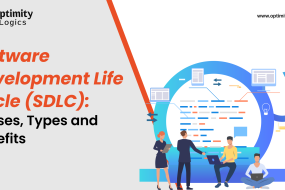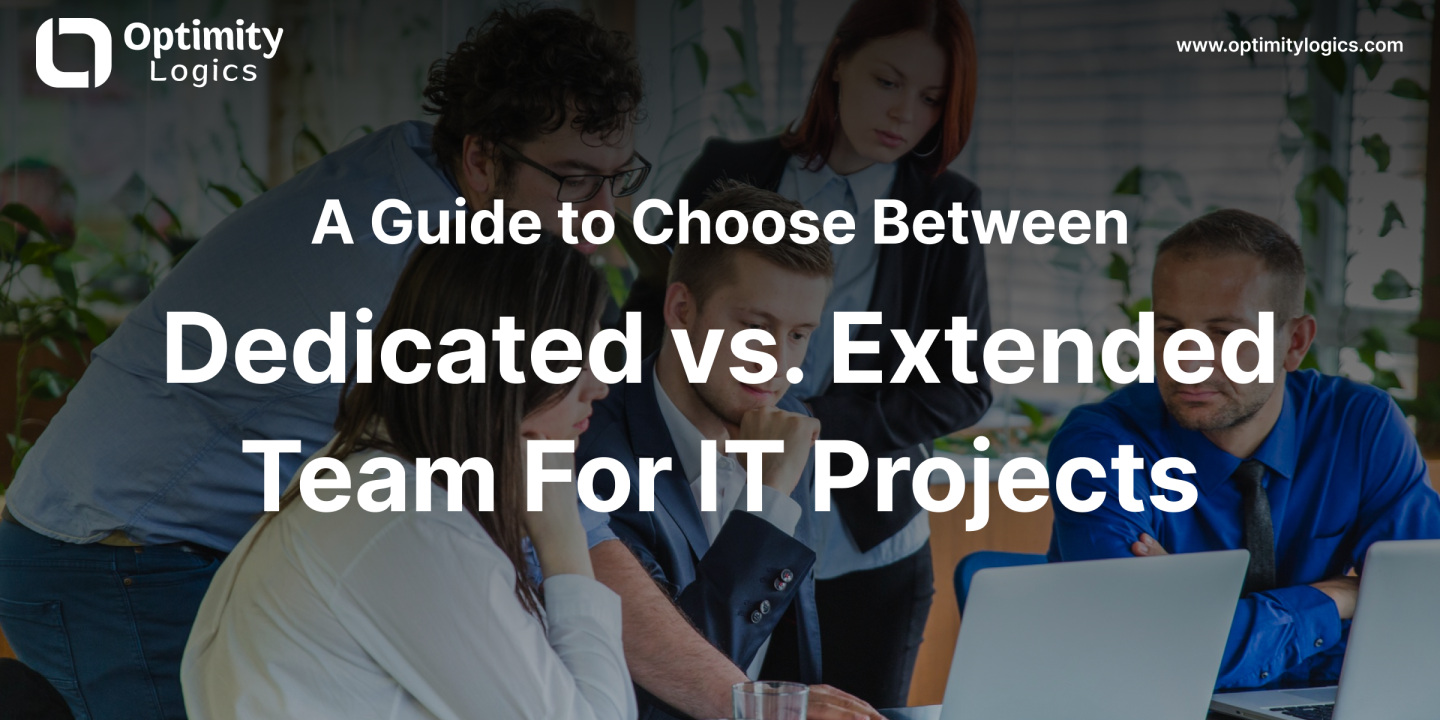
In today’s fast-paced digital world, businesses often face challenges in executing IT projects efficiently while keeping costs and timelines under control. Whether it’s software development, mobile app creation, or enterprise-level solutions, the structure of your development team can significantly impact the outcome. Two popular engagement models in IT outsourcing are the Dedicated Team and the Extended Team. Choosing the right approach is critical for project success, team collaboration, and cost optimization.
In this guide, we will explore the differences, benefits, drawbacks, and decision-making factors to help businesses make an informed choice.
Understanding the Dedicated Team Model
A Dedicated Team is a group of IT professionals who work exclusively on a client’s project. This team operates almost like an in-house team but is remotely managed by the client or outsourcing partner.
Key Features:
- Exclusive Focus: Team members work full-time only on the client’s project.
- Long-term Collaboration: Typically engaged for long-term projects requiring continuous development, maintenance, and updates.
- Flexibility: Clients can scale the team up or down based on project requirements.
- Full Control: Clients manage workflows, priorities, and project management processes.
Benefits of a Dedicated Team:
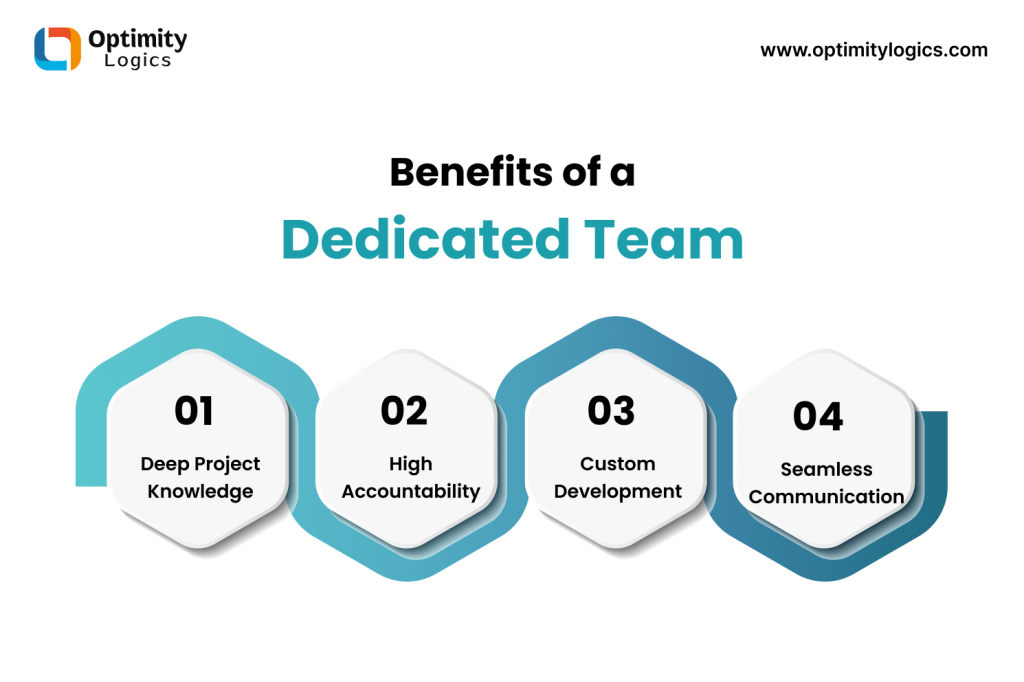
- Deep Project Knowledge: Continuous involvement allows the team to understand the business domain, workflows, and technical requirements deeply.
- High Accountability: Since the team is committed exclusively, they are more invested in the project’s success.
- Custom Development: Perfect for complex projects that require unique solutions rather than out-of-the-box development.
- Seamless Communication: Regular meetings, updates, and direct interaction improve collaboration and reduce misunderstandings.
Drawbacks of a Dedicated Team:
- Higher Costs: Exclusivity may increase cost, especially if the project duration is long.
- Management Overhead: Clients need to invest time in supervising the team, defining tasks, and monitoring performance.
- Resource Dependency: If a key team member leaves, replacing them might temporarily affect project continuity.
Use Case: Large-scale software development, enterprise systems, and long-term mobile app projects are ideal for dedicated teams.
Understanding the Extended Team Model
An Extended Team is an outsourcing model where external professionals supplement the client’s in-house team. Unlike a dedicated team, extended team members may work on multiple projects simultaneously but report to the client’s project manager or team lead.
Key Features:
- Integration with In-house Team: External experts collaborate closely with existing employees.
- Flexible Engagement: Teams can be added or removed as per project phases or workload.
- Shared Resources: Extended team members may not be fully dedicated and can serve multiple clients.
Benefits of an Extended Team:
- Cost Efficiency: You pay only for the resources you need, reducing overhead costs.
- Quick Scaling: Projects can quickly adapt to workload spikes or critical phases.
- Expertise on Demand: Access specialized skills without hiring full-time employees.
- Balanced Management: Clients leverage existing project management processes, reducing micromanagement.
Drawbacks of an Extended Team:
- Limited Exclusivity: Since members may serve other clients, they might not be fully immersed in your project.
- Communication Challenges: Requires clear processes to avoid delays or misalignment with in-house teams.
- Dependency on Existing Team: Success depends on seamless coordination between internal and extended members.
Use Case: Short-term projects, rapid prototyping, or projects requiring specific technical expertise without expanding the full-time team are best suited for extended teams.
Dedicated vs. Extended Team: Side-by-Side Comparison
| Feature | Dedicated Team | Extended Team |
| Exclusivity | Full-time, focused solely on client project | Part-time or shared with other projects |
| Management | Client manages project directly | Works under client’s team lead, but integrated with internal team |
| Cost | Higher, due to full-time dedication | Lower, as resources are flexible and scalable |
| Flexibility | Can scale but requires planning | Highly flexible, scale up/down quickly |
| Communication | Direct, frequent | Requires structured processes for integration |
| Project Type | Long-term, complex | Short-term, specific tasks, or skill augmentation |
| Skill Retention | High; team develops deep domain knowledge | Moderate; knowledge transfer depends on integration |
Factors to Consider When Choosing Between Dedicated and Extended Teams
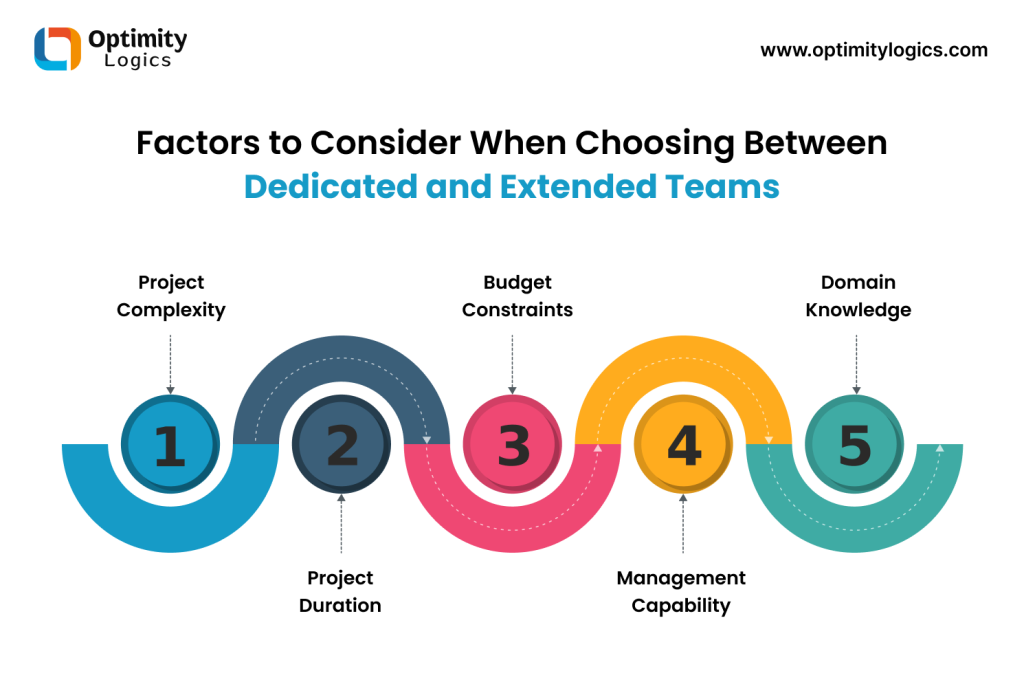
Selecting the right model depends on multiple factors, including project size, complexity, budget, and your organization’s structure. Here are the essential considerations:
1. Project Complexity
- High Complexity: Dedicated teams are better suited for projects with complex architecture, long development cycles, or unique technical requirements.
- Moderate Complexity: Extended teams work well when the project requires specific expertise without needing full-time commitment.
2. Project Duration
- Long-Term Projects: Dedicated teams provide continuity, reducing onboarding and knowledge gaps.
- Short-Term Projects: Extended teams are cost-effective and allow rapid scaling without long-term obligations.
3. Budget Constraints
- High Budget: Dedicated teams justify higher costs with increased control, expertise, and focus.
- Limited Budget: Extended teams allow access to expertise without significant investment in full-time resources.
4. Management Capability
- Strong Internal Management: If you have an experienced in-house project manager, managing a dedicated team can maximize productivity.
- Limited Management Bandwidth: Extended teams are easier to manage as they integrate into existing structures and processes.
5. Domain Knowledge
- Critical Domain Expertise: Dedicated teams develop in-depth understanding over time, suitable for complex business domains.
- Temporary Skill Requirement: Extended teams provide expertise for a short period without deep domain immersion.
How Optimitylogics Approaches Team Selection
At optimitylogics, we understand that no two IT projects are alike. Choosing between a dedicated or extended team depends on your business goals, project roadmap, and resource requirements. Our approach includes:
- Needs Assessment: Evaluating your project complexity, timelines, and technical requirements.
- Resource Matching: Identifying experts with the right skills and experience for your project.
- Flexible Engagement: Offering scalable solutions—dedicated or extended—based on your evolving needs.
- Seamless Integration: Ensuring smooth communication, workflow management, and collaboration between teams.
This strategic approach ensures that your project is delivered on time, within budget, and to the highest quality standards.
Tips for Maximizing Success With Either Model
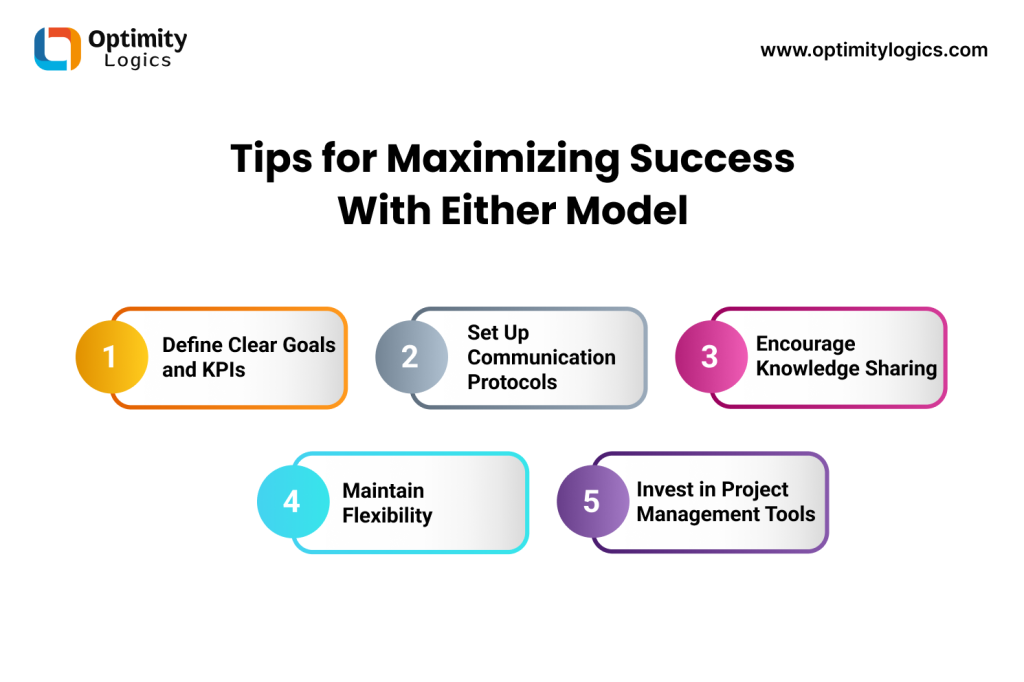
Whether you choose a dedicated or extended team, following best practices ensures smooth project execution:
- Define Clear Goals and KPIs: Document project objectives, milestones, and key performance indicators to guide the team.
- Set Up Communication Protocols: Regular meetings, progress tracking, and collaboration tools are essential for remote or hybrid teams.
- Encourage Knowledge Sharing: Document workflows, code standards, and project guidelines to minimize dependency on individual team members.
- Maintain Flexibility: Be open to scaling the team up or down as project phases evolve.
- Invest in Project Management Tools: Use platforms like Jira, Trello, or Asana to monitor progress and ensure transparency.
Conclusion
Choosing between a Dedicated Team and an Extended Team is a strategic decision that affects project success, budget efficiency, and business growth. Dedicated teams are ideal for long-term, complex projects requiring deep domain knowledge and full-time attention. Extended teams, on the other hand, offer flexibility, cost efficiency, and access to specialized skills for short-term or supplemental needs.
At optimitylogics, we help businesses evaluate these options carefully, ensuring the chosen engagement model aligns perfectly with project goals and organizational capabilities. By understanding your project requirements, timeline, and budget, you can select the right team structure to drive your IT project to success.


